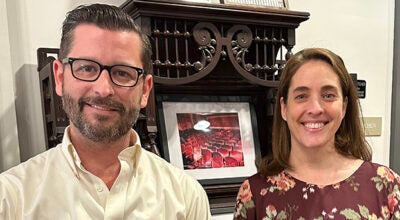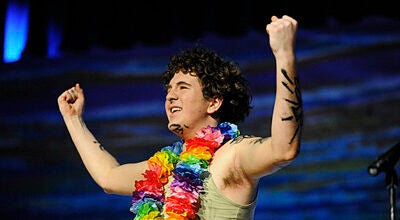Increased state funding trickles down to local artists
Published 7:24 pm Wednesday, August 30, 2017

- MUSIC TO THE EARS: Funding from the North Carolina Arts Council, matched by city and county money, helps Arts of the Pamlico support local artists and arts organizations, as well as allows AOP to bring a wide variety of programming to the Turnage Theatre. (Tom Whelan)
A boost to its budget this year means the North Carolina Arts Council will continue its efforts to bring the arts to rural counties.
NCAC has assigned $500,000 to the recurring budget for its Grassroots Arts Program, and will launch two new programs with $75,000 in recurring funds each: a new touring program as part of NCAC’s Statewide Arts Resources and a Military Arts Program, to support arts projects focused on serving North Carolina’s military servicemen and women, veterans and their families, according to an NCAC press release.
“That means more programming and support for local artists,” said Debra Torrence, executive director of Arts of the Pamlico.
Grassroots funding is used by AOP to support a variety of local arts organizations and artists such as the Beaufort County Choral Society, Beaufort County Traditional Music Association, visiting artists’ weeklong residencies and concerts in Beaufort County schools and multicultural programming, along with many other programs and organizations. The new touring program specifically targets rural communities, with a plan to send high-quality programing to Tier 1 and Tier 2 counties.
For AOP, the increased budget at the state level contributes a modest $2,000 increase to Grassroots funding, Torrence said. But it is city and county contribution to the arts that is crucial to AOP’s ability to access the additional funding, she said.
“We match the funds as required dollar for dollar with city and county money, and that’s why that support from local government is so critical in both allowing us to bring state funds to the county to support local artists and access to the arts and to bridge city and county money to increase programming for Beaufort County and the City of Washington residents,” Torrence said.
Arts funding from state and local governments can also cause a domino effect to local economies, according to NCAC.
“For 50 years, the North Carolina Arts Council has supported arts as an economic catalyst,” said Wayne Martin, Executive Director of the N.C. Arts Council. “Approximately 80 percent of our funds flow directly to arts organizations and artists, allowing communities to revitalize downtowns, develop innovative education programs and provide citizens with abundant, high-quality arts programming.”
According to the North Carolina Arts Council, for every $1 invested by the state in arts funding, there is a return of nearly $20 in private, matching funds. Returns have been directly measured in such places as the Vollis Simpson Whirligig Park in downtown Wilson. Housing nearly 30 whirligigs, the park will be officially dedicated Nov. 2. Since the park has been in progress, more than $25 million has been invested within a two-block radius, which includes restaurants, a brew pub and residential apartments, according to the press release.
In Washington, many see AOP’s Turnage Theatre and several downtown art galleries as just such catalysts.





